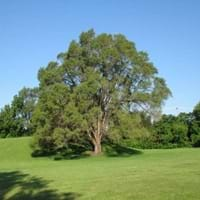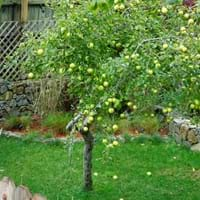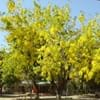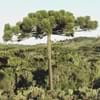Life Span
Perennial
Perennial
Type
Tree
Flowering Plants, Fruits, Trees
Origin
Asia
Eastern Europe, Southern Europe, Russia/Siberia, Southern Asia, Western Asia
Types
Not Available
Not avaialable
Number of Varieties
Not Available
Habitat
Woodland Garden Canopy
Hillside
USDA Hardiness Zone
2-9
5-8
Sunset Zone
A1, A2, A3, 1a, 1b, 2a, 2b, 3a, 3b, 4, 5, 6, 7, 8, 9, 10, 11, 14, 15, 16, 17, 18, 19, 20, 21
1b, 2a, 2b, 3a, 3b, 6, 7, 8, 9, 10, 11, 14, 15, 16, 17, 18, 19, 20, 21, 22, 23, 24
Habit
Upright/Erect
Oval or Rounded
Minimum Height
Not Available
Minimum Width
Not Available
Flower Color
Not Available
White
Flower Color Modifier
Bicolor
Bicolor
Fruit Color
Green, Tan
Gold
Leaf Color in Spring
Dark Green
Green
Leaf Color in Summer
Dark Green
Green
Leaf Color in Fall
Dark Green
Green
Leaf Color in Winter
Not Available
Light Green
Leaf Shape
Elliptic
Oblong
Plant Season
Summer
Spring, Fall
Sunlight
Full Sun
Full Sun, Partial Sun, Partial shade
Growth Rate
Very Fast
Medium
Type of Soil
Clay, Loam, Sand
Clay, Loam
The pH of Soil
Acidic, Neutral, Alkaline
Acidic, Neutral
Soil Drainage
Average
Well drained
Bloom Time
Spring
Early Spring, Spring
Tolerances
Pollution, Drought
Drought
Where to Plant?
Ground
Ground
How to Plant?
Seedlings
Grafting, Seedlings, Transplanting
Plant Maintenance
Medium
Medium
Watering Requirements
Do Not over Water, Needs watering once a week
Medium
In Summer
Lots of watering
Lots of watering
In Spring
Moderate
Moderate
In Winter
Average Water
Average Water
Soil pH
Acidic, Neutral, Alkaline
Acidic, Neutral
Soil Type
Clay, Loam, Sand
Clay, Loam
Soil Drainage Capacity
Average
Well drained
Sun Exposure
Full Sun
Full Sun, Partial Sun, Partial shade
Pruning
Remove diseased branches by the tool's blades dipped into the alcohol solution
Remove damaged leaves, Remove dead branches, Remove dead leaves
Fertilizers
20-5-10 fertilizer
All-Purpose Liquid Fertilizer
Pests and Diseases
Aphids, Leaf spot, Powdery mildew
Black rot, Leaf spot, Scab
Plant Tolerance
Drought
Drought
Flowers
Insignificant
Showy
Flower Petal Number
Not Available
Single
Foliage Texture
Medium
Medium
Foliage Sheen
Matte
Matte
Attracts
Insects, Not Available
Birds
Allergy
Mild Allergen
Mouth itching, Throat itching
Aesthetic Uses
Bonsai
Not Used For Aesthetic Purpose
Beauty Benefits
Not Available
Not Available
Environmental Uses
Air purification
Air purification
Medicinal Uses
Antibilious, Antidote, Demulcent, Diuretic, Febrifuge, Poultice
Cancer, constipation, Diabetes, Diarrhea, Dysentry, Fever, Heart problems, Tooth ache
Part of Plant Used
Fruits, Inner Bark, Leaves
Fruits
Other Uses
Inner bark can be dried and made into noodles, Sauces, Sometimes used for making wine, Used as a potherb, Wood used for boat making
Used As Food, Wood is used for making furniture
Used As Indoor Plant
No
No
Used As Outdoor Plant
Yes
Yes
Garden Design
Shade Trees
Edible, Feature Plant, Fruit / Fruit Tree, Topiary / Bonsai / Espalier
Botanical Name
ULMUS pumila
MALUS domestica 'Golden Delicious'
Common Name
Siberian Elm
Apple, Golden Delicious Apple, Yellow Eating Apple
In Hindi
Siberian Elm
Golden Delicious
In German
Siberian Elm
Golden Delicious
In French
Siberian Elm
Golden Delicious
In Spanish
Siberiano Elm
Golden Delicious
In Greek
Σιβηρίας Elm
Golden Delicious
In Portuguese
Siberian Elm
Golden Delicious
In Polish
Siberian Elm
Jabłoń domowa 'Golden Delicious'
In Latin
Siberian Elm
Golden Delicious
Phylum
Magnoliophyta
Magnoliophyta
Class
Magnoliopsida
Magnoliopsida
Clade
Angiosperms, Eudicots, Rosids
Angiosperms, Eudicots, Rosids
Tribe
Not Available
Not Available
Subfamily
Not Available
Not Available
Number of Species
Not Available
Not Available
Season and Care of Siberian Elm and Golden Delicious
Season and care of Siberian Elm and Golden Delicious is important to know. While considering everything about Siberian Elm and Golden Delicious Care, growing season is an essential factor. Siberian Elm season is Summer and Golden Delicious season is Summer. The type of soil for Siberian Elm is Clay, Loam, Sand and for Golden Delicious is Clay, Loam while the PH of soil for Siberian Elm is Acidic, Neutral, Alkaline and for Golden Delicious is Acidic, Neutral.
Siberian Elm and Golden Delicious Physical Information
Siberian Elm and Golden Delicious physical information is very important for comparison. Siberian Elm height is Not Available and width Not Available whereas Golden Delicious height is 460.00 cm and width 460.00 cm. The color specification of Siberian Elm and Golden Delicious are as follows:
Siberian Elm flower color: Not Available
Siberian Elm leaf color: Dark Green
Golden Delicious flower color: White
- Golden Delicious leaf color: Green
Care of Siberian Elm and Golden Delicious
Care of Siberian Elm and Golden Delicious include pruning, fertilizers, watering etc. Siberian Elm pruning is done Remove diseased branches by the tool's blades dipped into the alcohol solution and Golden Delicious pruning is done Remove damaged leaves, Remove dead branches and Remove dead leaves. In summer Siberian Elm needs Lots of watering and in winter, it needs Average Water. Whereas, in summer Golden Delicious needs Lots of watering and in winter, it needs Average Water.





